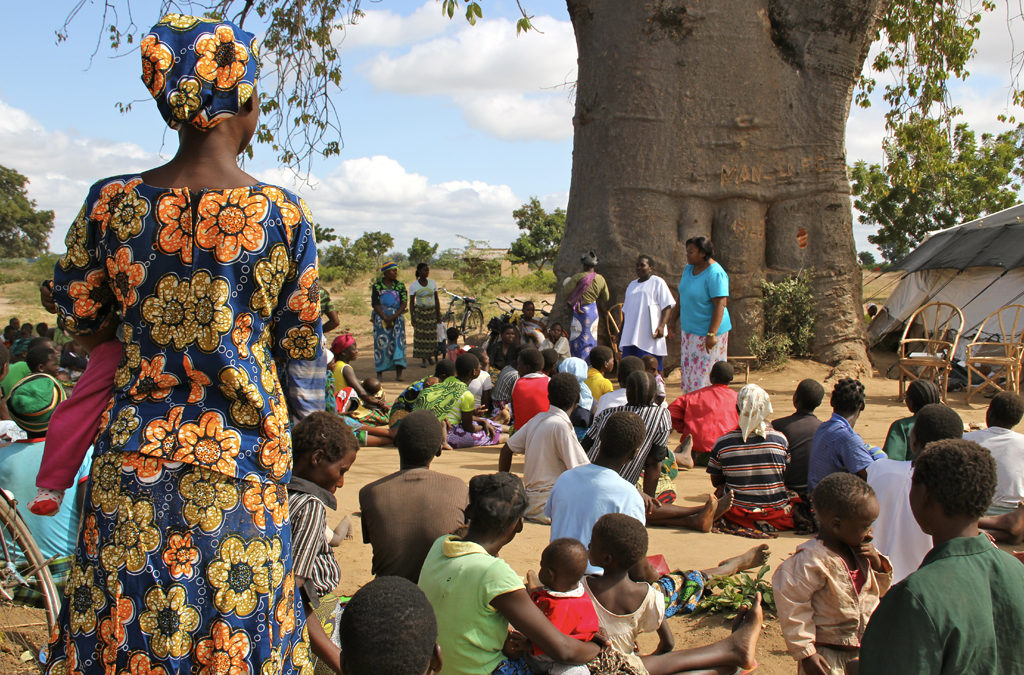Photographs and paintings of formal peace negotiations over the centuries bear witness to the historic male domination of diplomatic processes. The absence of women, so visually striking, is documented by various analyses as well as lived experience. Recent advocacy, reflected above all in the year 2000 Security Council Resolution 1325, which urged Member States “to ensure increased representation of women at all decision-making levels in national, regional and international institutions and mechanisms for the prevention, management, and resolution of conflict,” has highlighted less documented roles that women play and enormous positive potential, but also the negative consequences of women’s exclusion from formal processes. What the images and resolutions still miss, however, is a host of factors involving religious roles and motivations. The invisibility of women combines with a limited and often unbalanced approach to religious dimensions, one that either glorifies or vilifies them.
The missing link of understanding and integrating religious dimensions in broader analyses, specifically in relation to women, results in significant gaps in appreciating and advancing peacebuilding. Religious factors can lead to a double exclusion of women’s perspectives, first from the classic “diplomatic” perspective, and second because religious traditions rarely give visibility and influence to women. This obscures significant areas of work and roles, positive and negative, actual and potential, that infuse the realities of conflict and peace. Examples include specific religious approaches and practices to conflict resolution, distinctive understandings of what positive peace involves, and distinctive roles that women, inspired in varying ways by their religious links and faith, play. Specific vulnerabilities of women in conflict situations—rape as a weapon, for example—and burdens women carry during conflict and breakdowns in order, can be viewed or distorted by religious beliefs that shape orders of priority in negotiations and concepts of justice and paths to reconciliation (or bitter memories and revenge) linked to efforts to end conflict and establish foundations for peace.
Religious roles in relation to women are widely seen as primarily more negative than positive. A common theme is to exalt motherhood and women’s roles within families; patriarchal attitudes often confine their roles to that space and exclude women from formal leadership. Women’s insights and voices in many areas of religious life are muted and that applies to the most visible approaches to peacebuilding. Among insights from insightful leaders who work with women peacebuilders are women’s broad and rich understandings of what peace involves, their capacity to appreciate underlying causes of tensions positively, and, less positively, to pass on resentments and bitter memories across generations through childrearing. Linking theological understandings, for example of intergroup relations, to realities of daily life is a skill not confined to women or to religious communities, but, whether religiously inspired or not, women often show distinctive gifts (for example in bringing groups together and crossing social barriers) and insights into causes and consequences of tensions. When women are not part of formal hierarchies and networks, religious and secular, they can eschew the rules and formalities that go with such institutions, bypassing obstacles and developing creative problem-solving approaches.
Different religious and spiritual traditions bring distinctive approaches to efforts to dampen tensions and work toward the positive peace to which we aspire. These approaches are commonly narrated by and remembered with the faces of men. Yet women are also important actors. The distorted patterns contribute to over-generalized notions of “religion” as well as women’s roles that reflect habits of neglect, but also more strategic or ethical ignorance and approaches. The habits have consequences both for understanding situations of conflict and working toward lasting solutions.
Both legend and recent research and advocacy show paths toward a richer appreciation of the widely diverse ways in which women engage in the complex processes that we call peacebuilding and how religious factors influence their work and its impact. A multi-year project supported by the United States Institute of Peace (USIP) explored several specific religious traditions (Catholic, Muslim, and Jewish) as they approached women’s roles in peacebuilding and case studies from different conflicted world regions, but this represented a preliminary and partial approach. Analysis that delves into religious traditions and the individual and network involvement of women can enrich understanding and remove masks. These can be grounded in theological perspectives or specific spiritual values or emerge through practice and experience. Efforts and ideas that cross religious divides (interreligious or intrafaith), deliberately and by design or otherwise, are of particular interest. Ways in which networks of women, formal and less formal, buttress the work is an important focus.
Thus two related fields: peacebuilding and women’s studies, would benefit in countless ways by looking more deliberately and thoughtfully to the very diverse roles that religion plays in understanding conflicts and developing and creating better paths towards positive peace.
Katherine Marshall is a Senior Fellow at Georgetown University’s Berkley Center for Religion, Peace, and World Affairs, where she leads the center’s work on religion and global development, and a professor of the practice of development, conflict, and religion in the Walsh School of Foreign Service.





